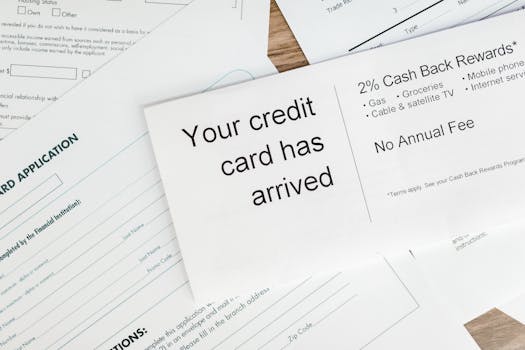Financial literacy
How to Recognize Reliable Financial Information Online
Discover practical steps to spot reliable financial information online. Get clear checklists, proven cross-checking techniques, and red flag warnings to verify sources and protect your finances each time you read.
Advertisement
Scrolling through advice on investments or savings can feel overwhelming. Some financial information sounds polished and credible, while other tips seem designed just to catch your attention. Navigating this flood confidently takes more than intuition alone.
Accurate financial information protects wallets and futures. Outdated or misleading data encourages rash choices. That’s why knowing how to check facts, sources, and motivations behind what you read matters for anyone making money-related decisions.
Ready to sharpen your critical eye? This guide breaks down the exact steps for finding, checking, and trusting financial information online—with actionable examples along the way. Let’s get started finding signals you can trust.
Spot Trusted Financial Sources Fast
You’ll save time and avoid traps when you can quickly spot credible financial information brands, experts, and resources. Recognizing them requires looking for several telltale signs before diving in.
Start by examining the site’s about page and author bio. Watch for official credentials: degrees in finance, certifications, or professional experience. Ask yourself, “Would I trust this individual to manage my money offline?”
Check Credentials and Background
When reading a blog, inspect the author’s background at the top or bottom of the page. A Chartered Financial Analyst or Certified Public Accountant showing clear work history builds trust.
If an author only lists ‘financial enthusiast’ and no track record, treat advice carefully. Genuine experts welcome scrutiny and usually share links to their LinkedIn or professional affiliations.
See a site quoting an MBA or CFP? Pause and search for that person online. If their name appears in podcasts, news, or industry events, you’ve probably found a reputable source of financial information.
Review Site Reputation and Design
While website design isn’t a guarantee, professionalism can signal care for accuracy. Clean layouts, up-to-date posts, and clear navigation offer peace of mind.
Shady pop-up ads or mysterious site addresses are red flags. When a financial information site looks thrown together, there’s more risk of biased or fabricated advice.
Before bookmarking, glance at the homepage footer for contact info or organization details. Established outlets display real mailing addresses and dedicated support teams.
| Source Type | Credentials Visible | Fact-Checking Policy | Next Step |
|---|---|---|---|
| Government Finance Sites | Yes | Strict | Bookmark for reference |
| Major News Outlets | Sometimes | High | Compare with other sources |
| Personal Blogs | Varies | Low | Verify author info |
| Industry Associations | Yes | Strict | Use trusted reports |
| Anonymous Advice Forums | No | None | Double-check elsewhere |
Evaluate Facts, Motives, and Precision
Building confidence in financial information relies on checking reasons and facts behind every claim. Reliable advice clearly cites facts and avoids vague promises or emotional hooks.
Look for data references, source links, and date stamps. Good financial information includes research studies, government stats, or links to reputable publications—never wild guesses or sweeping generalizations.
Spot Manipulative Language
Watch for urgent pitches: words like “must,” “guaranteed,” or “once-in-a-lifetime.” These often signal products or advice with bias behind them, not genuine help.
A trustworthy financial information piece explains risks and potential downsides. It doesn’t just focus on best-case results or urge immediate, emotional decisions.
- Check for specific numbers or sources—vague claims point to weak advice. Always ask, “Where did this number come from? Can I verify it?”
- Look for date stamps or recent citations—stale info is risky when making decisions. Always confirm the currency of information before acting.
- Dismiss advice urging quick decisions—reliable sources provide clear explanations and context. Good financial information lets time for reflection.
- Be wary if every paragraph sells a product—objective sources focus on benefits and drawbacks, not pushing one solution.
- Compare results with known industry averages—real numbers rarely sound unbelievable or hype-filled.
When in doubt, pause and research a claim by searching terms like “source name + review” or “site name + fact check.” Broadly trusted advice passes these checks easily.
Identify Agenda and Disclosure Statements
Sites or influencers required to disclose sponsored content do so openly. If you see a financial information post missing “ad,” “sponsored,” or “partner” tags, question the motivation.
Legitimate financial writers admit if a recommendation benefits them. Look for sentences like, “If you purchase using my link, I may earn a commission.”
- Seek out full disclosure language at post beginnings or ends—transparency builds trust in financial information.
- Notice affiliate disclaimers—ethical finance writers never hide compensation sources. This rule helps spot sales disguised as guidance.
- View privacy policies or advertising practices—these show commitment to honest and ethical advice.
- Watch for organization affiliations—acknowledged connections reduce conflict-of-interest suspicions.
- If unsure, message the writer or support team and ask for clarification—transparent brands reply quickly and candidly.
Transparent motives, clear disclosures, and open dialogue all indicate reliable financial information worth referencing for your own financial planning.
Recognize Red Flags and False Promises
Identifying misleading advice or scams isn’t just for advanced users—anyone can spot warning signs once you know what to look for in financial information.
Low-risk, high-return claims rarely stand up to scrutiny. If advice relies mainly on emotional stories, it’s smart to slow down and question the details provided.
Distinguish Sensationalism from Realistic Outcomes
Reliable financial information shows examples using real numbers and scenarios. For instance, a guide to building savings might say, “Sarah saved $2,000 in six months by cutting two expenses.”
Empty boasts—like “double your money overnight”—skip specifics. True financial guidance details the process and time required, not just the ending.
Visual charts add credibility, but verify their sources. If a graph feels too good to be true, check if reputable outlets share similar figures. If they don’t, stay cautious.
Safeguard Against Spoofed Brands and Look-alike URLs
Phishing attacks can mimic trusted banks or advisors with nearly identical web addresses. One extra letter in a URL can mean the difference between safe financial information and a scam attempt.
Before entering personal data, double-check spelling, design consistency, and presence of security certificates. Clicking https and looking for padlock icons are daily habits that protect your finances.
Even legitimate-looking social posts or emails may link to imitators. Hover your mouse over links to preview addresses. Slow down, check details, and ensure the site you’re using is the genuine one.
Test Claims with Cross-referencing and Fact-checking
Every bit of financial information should pass the “multiple source” rule before being fully trusted. Diversifying sources is as valuable for knowledge as it is for investments.
When advice matches what you find on respected finance websites, government portals, and top industry news, it’s less likely to mislead.
Use Fact-checkers and Public Databases
If a site quotes retirement account returns or tax rates, cross-check with government resources. The IRS, SEC, and Federal Reserve post data accessible to everyone.
Fact-checking platforms like PolitiFact and Snopes apply journalistic research to financial information as they do for headlines. Searching claim snippets can surface detailed reports quickly.
Try, “401(k) average return + government source” in your search bar. Whenever sources conflict, err on the side of transparent official outlets.
Engage with Finance Communities for Peer Review
Subreddits and finance forums gather thousands who analyze financial information openly. Reading discussion threads can reveal truth or errors in viral posts.
When uncertain about a tip, copy and paste it into one of these forums with a question like, “Has anyone tried this method?” Real users share whether the advice worked in practice.
Recognize helpful replies by detail and politeness. Overly promotional or rude answers tend to signal a bias or non-expert stance. Balanced, experience-based feedback earns trust.
Practice Smart Searching and Filtering Strategies
Improving your online searches lets you weed out unreliable financial information faster and zoom in on quality insights. Powerful searches combine keywords, trusted sites, and filtered results.
Don’t settle for the “top hit.” Explore three or four different sources with related but slightly different keywords. This approach uncovers a richer mix of data and expert advice.
Create Search Phrases that Surface Authoritative Voices
Instead of searching just “best savings account,” try “best savings account site:gov” to spotlight government results. Or use “best savings account + unbiased review” to pull up objective analyses.
Mix and match terms like “independent,” “audited,” and “verified” to filter out sites designed for sales over substance. Building your own set of advanced searches pays lifetime dividends in accurate financial information.
Bookmark the best phrases for frequent money topics—like budgeting, investing, or loans. Next time a question pops up, use your custom searches to find the right answers quickly.
Use Site Filters and Search Tools to Spot the Newest Content
Limiting results to the last year helps focus on the freshest financial information. With search tools, select “past 12 months” or “past week” before reviewing advice for relevance.
Sorting by “site:gov” or “site:edu” narrows results to established authorities. Combine these filters with your core keywords for financial information to reduce the risk of reading outmoded or speculative guidance.
Next time you spot a newsworthy finance trend, filter by “news” tab on search engines for up-to-date headlines. Cut through hype by always looking for original publishing dates and named authors.
Upgrade Everyday Habits for Verifying Online Finances
Committing to a verification routine keeps guesswork out of your money choices. Simple steps get you in the habit of validating new financial information before it guides your plans.
Each strategy you use—cross-checking, reviewing origin, or tracing citations—compounds over time. You’ll soon recognize signals of legitimacy as clearly as traffic lights on your daily route.
Spot Common Red-Flag Patterns Quickly
Copy-pasted charts, identical phrasing between different blogs, and lacking or misleading numbers each point to weaker financial information. Step away when multiple red flags appear together.
Create a checklist to review: Is the source reputable? Can I identify the author? Are disclosures visible? If you answer “no” to more than one, find a new resource.
With regular use, this checklist becomes second nature. You’ll scroll less, choose smarter, and teach others how to evaluate financial information confidently, too.
Build a Library of Trusted Sites and Voices
Start by bookmarking top-rated government, nonprofit, and educational sites for financial information. Let your web browser remember these “go-to” spots for research and updates.
Save time by following trustworthy financial experts on social media. If their advice stays practical, jargon-free, and transparent, consider adding their newsletters or podcasts to your routine.
As you vet new resources, prune outdated or unreliable sources from your bookmarks. Think of this habit as keeping your fridge stocked: discard expired items and restock the freshest supplies for your financial health.
Move Forward with Confidence and Clarity
Finding reliable financial information is a repeatable process, not a one-time achievement. With clear habits, you’ll separate facts from fiction far more easily, making decisions with greater peace of mind.
Double-checking credentials, using cross-referencing strategies, and building a trustworthy reading list empower you every step of your financial journey. Each habit you build adds a layer of protection and clarity.
Stay proactive and teach trusted techniques to friends or family. The better everyone gets at recognizing quality financial information, the safer and more successful our financial decisions can be.





